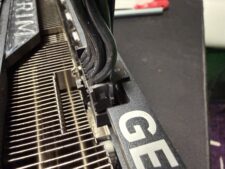Beijing LK-99 Levitation Video Author Admits Fraud, Takes it Down

There’s been no slowing down in the LK-99 alleged superconductor breakthrough saga. Yet instead of it becoming clearer whether or not LK-99 is “the First Room-Temperature Ambient-Pressure Superconductor” as claimed by the original Korean Authors, we’re left with more questions than answers. The original poster of one of the Billibilli videos circulating on the Internet and seemingly proving LK-99’s levitation ability has come forward, and admitted his clip was a hoax.
The video in question is allegedly from the University of Science and Technology in Beijing and purports to show a small black substance floating in the air as it follows a magnet. According to the video’s poster, he did it for “attention grabbing purposes” – it was a way to coast the hype around LK-99. Well, he did write “LK-99” and “levitating”, which sounds about right for the purpose. You can see the original video below (if you expand the… tweet? X?).
Video of #lk99 levitating below a magnet from University of Science and Technology Beijing pic.twitter.com/MqEIVhSKqOAugust 6, 2023
This original (and now debunked) video doesn’t look very good, no; the angle is a weird one to choose (but it’s not like everyone has to also be a cinematographer); and there’s an overall sketchiness to it. But even if it looked great, it could still be a fake as could any of the videos we’ve reported on in our coverage.
We should note, however, that there are at least two other LK-99 levitation videos circulating, which have not been withdrawn or disproven. As we reported previously, these videos come from Huazong and Wuhan universities.
Whenever a claim as momentous and potentially civilization-changing such as “we’ve found the world’s first room-temperature superconductor” is made, noise is bound to follow. And sometimes the noise gets to you, which is why it’s important to note that whether LK-99 is or isn’t legit is still very much up in the air.
Granted, the scientific community usually doesn’t have to deal with social media-spread videos when it’s evaluating whether or not a given paper has merit. But even focusing on the hard science (which we want to be clear, replicable, and truthful) and moving on to the boundaries of peer-review scientific process, it becomes difficult to deal with the noise.
After all, papers have been published in Nature claiming “near-ambient” superconductivity that have been proven as hoax and described as “a very disturbing picture.” And let’s not forget that the Korean author’s paper is still pending the outcome of a proper peer-review process.
Superconductors are attractive because they are impactful, and everyone wants their own black swan. However, materials science is a messy affair that plays in the same realm as quantum physics.
The original author of the video has apologized. pic.twitter.com/7MDxxKgW7MAugust 7, 2023
The original paper also lacks crucial information that you’d think would be there. Neither the cooking time (how long at what temperatures the mixtures have to stay within a vacuum oven for LK-99 to be synthesized and whether there’s thermal variation at any moment) nor the quench rate (the same, but when it needs to cool down) are, however, well-documented.
The video poster ultimately claimed that the experience of being a part of the noise had changed him, and that he’d be more cautious with his actions and words in the future.
We should all be so lucky.













